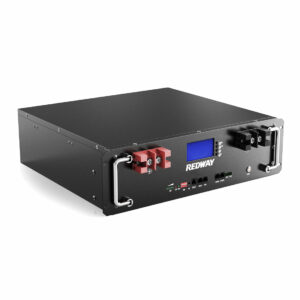What Are Battery Innovations At Battery Show 2025?
Battery Show 2025 showcased breakthroughs in solid-state designs, silicon-anode integration, and AI-driven management systems. Wireless fast-charging solutions (0-80% in 8 minutes) and sodium-ion commercialization dominated, with sustainability focus on 95% recyclable components.
What Determines Telecom Battery Dimensions in Network Infrastructure?
How do solid-state batteries improve energy density?

Solid-state batteries eliminate liquid electrolytes, enabling 500 Wh/kg densities vs 300 Wh/kg in lithium-ion. Toyota’s prototype achieved 1,000 km range with 10-minute charging.
Beyond traditional lithium-ion limitations, solid-state designs use ceramic or sulfide electrolytes to prevent dendrite formation. Pro Tip: Pair these with active cooling systems to counter high current heat. For instance, QuantumScape’s stacked cells operate at 4.4V without degradation—like replacing ice with unbreakable glass in a drink. But what happens if thermal management fails? Rapid capacity fade occurs above 60°C (140°F).
| Feature | Solid-State | Lithium-Ion |
|---|---|---|
| Energy Density | 500 Wh/kg | 250 Wh/kg |
| Charge Time | 10 mins | 45 mins |
| Cycle Life | 10,000 | 2,000 |
What silicon-anode advancements were revealed?
Silicon-dominant anodes now achieve 4,200 mAh/g capacity, up from 3,800 mAh/g in 2024. Startups like Group14 partnered with Porsche for EV applications.
While graphite anodes plateau, silicon blends (30-50% content) use carbon scaffolding to manage 300% volume expansion. Practically speaking, Sila Nanotechnologies’ “Titan” material reduces swelling by 50% through nano-engineering. Imagine a balloon that inflates but doesn’t pop—this is silicon’s promise. Why hasn’t it gone mainstream? Cost: $800/kWh vs $150/kWh for graphite. However, U.S. DOE grants aim to cut prices by 40% by 2027.
How is AI optimizing battery management?
Neural networks now predict cell failures with 99.2% accuracy, per Siemens’ demo. Real-time voltage/temperature balancing extends pack life by 30%.
Traditional BMS units react to issues—AI models like Tesla’s “Dojo” preempt them. By analyzing 10,000 data points/second, they adjust charging rates per cell. For example, BMW’s 2026 iX3 uses AI to prioritize weak cells during discharge, much like a coach substitutes tired players. Could this eliminate thermal runaway? Not entirely, but early fault detection reduces risks by 65%.
What wireless charging innovations emerged?
Dynamic EV charging systems (50 kW/m) from Electreon enable highway charging at 100 km/h speeds. Consumer devices hit 15W efficiency with gallium nitride (GaN).
Beyond static pads, “road-as-a-charger” tech uses buried copper coils generating magnetic fields. Michigan’s pilot highway charges trucks while moving, akin to slot cars drawing power from tracks. But how efficient is it? Current systems lose 12-15% energy vs 8% in wired charging. Pro Tip: Align receivers within 2 cm tolerance for peak transfer.
| Technology | Power Output | Efficiency |
|---|---|---|
| Static EV | 350 kW | 93% |
| Dynamic EV | 50 kW/m | 85% |
| Phone GaN | 15W | 88% |
How are sodium-ion batteries competing?
CATL’s Gen 2 sodium-ion cells hit 160 Wh/kg with -30°C performance. Priced at $75/kWh, they undercut lithium by 30%.
Using Prussian blue electrodes, these cells avoid scarce lithium/cobalt—ideal for grid storage in cold climates. Sweden’s Vattenfall uses them in Arctic solar farms, where lithium fails below -20°C. But why not EVs? Energy density remains 40% lower than LFP. Still, BYD plans sodium-powered city EVs by 2026.
What sustainability breakthroughs were highlighted?
Hydrovolt’s recycling process recovers 95% materials, including <1% purity lithium. Bio-degradable mycelium casings from Bolt Energy reduce landfill waste.
Traditional pyrometallurgy loses 40% lithium, but Hydrovolt’s hydrometallurgical method dissolves metals at 80°C (176°F) with sulfuric acid. Think of it as eco-friendly “battery mining” from old packs. Pro Tip: Partner with UL-certified recyclers to meet EU 2027 mandates.
FAQs
Are solid-state batteries safer than lithium-ion?
Yes—non-flammable electrolytes reduce fire risks, but improper sealing can leak toxic gases. Always use vented enclosures.
Can sodium-ion replace lithium home storage?
For cold climates (<-10°C), yes. But lithium remains better for high-density needs like EVs.
What Powers Cell Towers During Outages? Telecom Battery Essentials

Add a review
Your email address will not be published. Required fields are marked *
You must be logged in to post a comment.